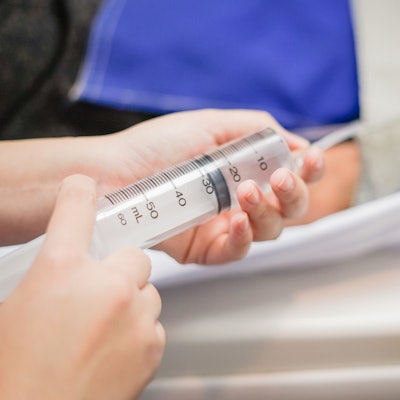
It may not be necessary to warm CT contrast to body temperature before injecting it into patients, according to research published online July 28 in the American Journal of Roentgenology.
Warming CT contrast to body temperature may reduce its viscosity and therefore pressure on injection, wrote a team led by Noor Basharat of Valleywise Health in Phoenix, AZ. But whether this practice also reduces adverse events is unclear.
Basharat and colleagues conducted a study that included 3,939 patients who underwent CT exams with iohexol 350 (Omnipaque) warmed to body temperature and 3,933 patients who received room temperature contrast. The adverse event rate was similar between the two protocols: 0.28% for those patients who were administered body temperature contrast and 0.43% among patients who received room temperature contrast (p = 0.19).
The authors did acknowledge that their study did not take into account the effect of CT contrast temperature on image quality or patient comfort. But they concluded that "[the study] findings question the utility of prewarming contrast media, which can be a resource-intensive process."



















